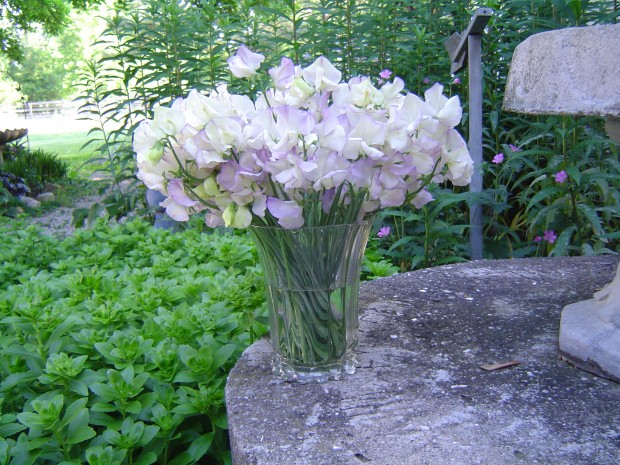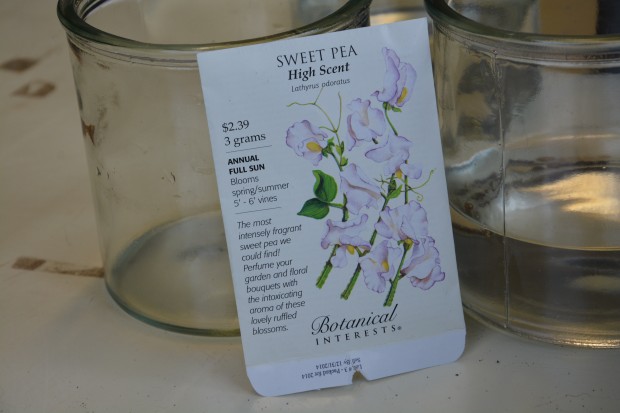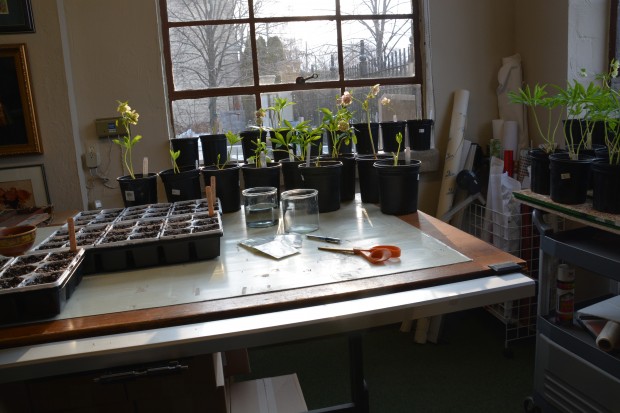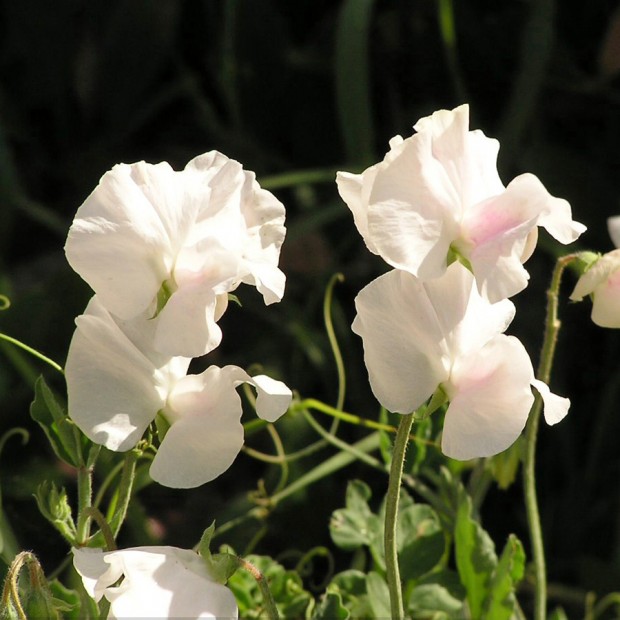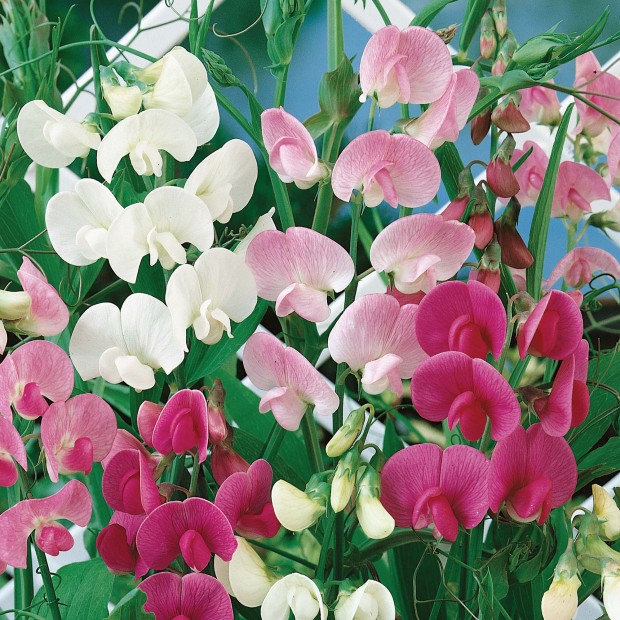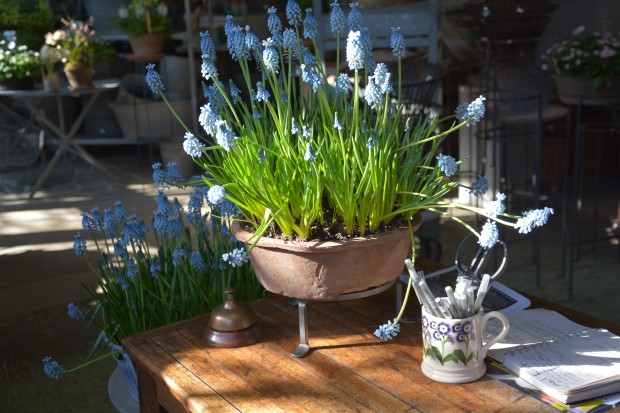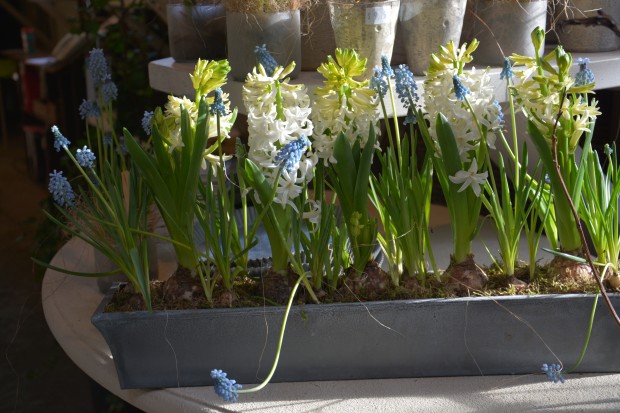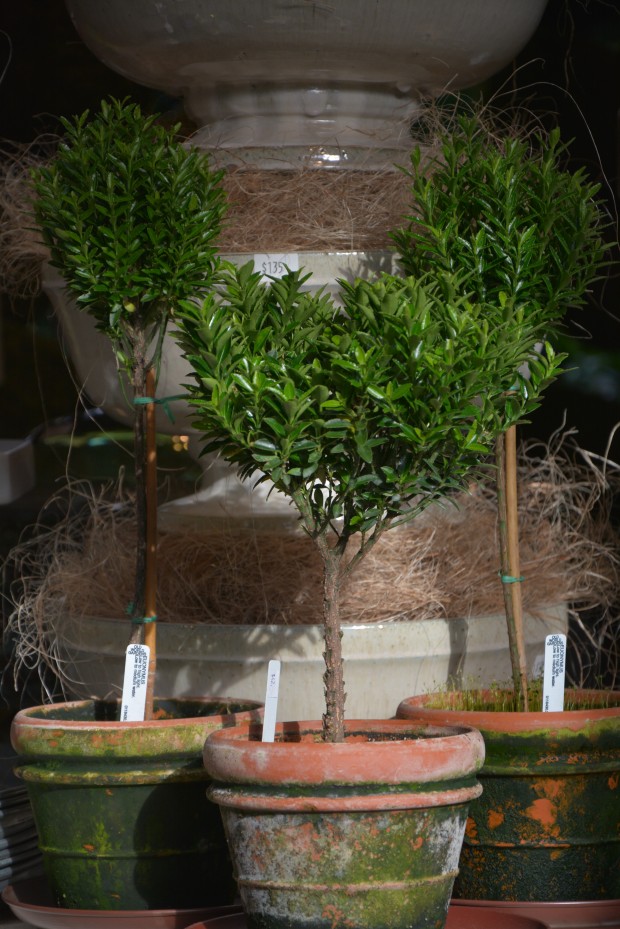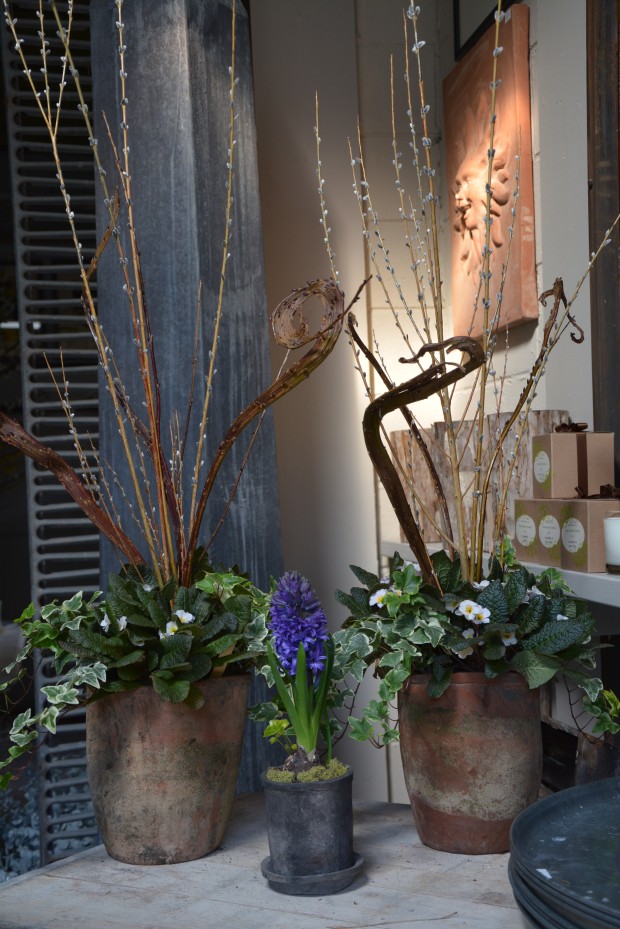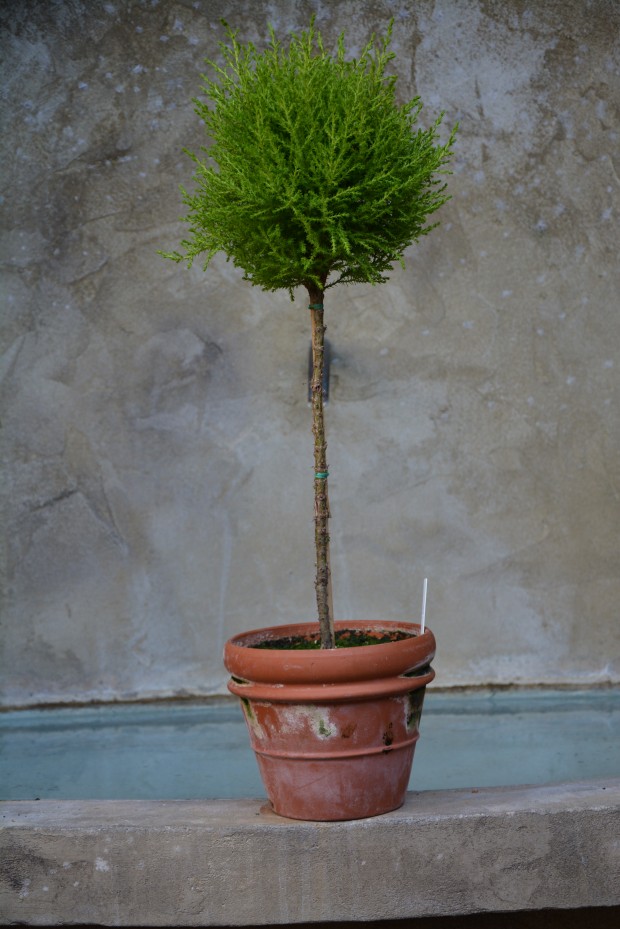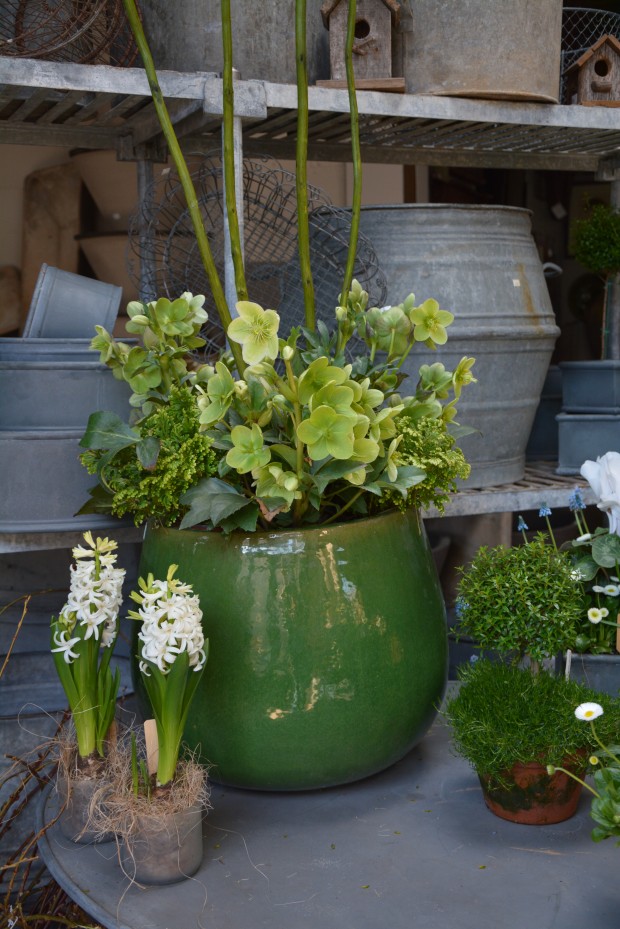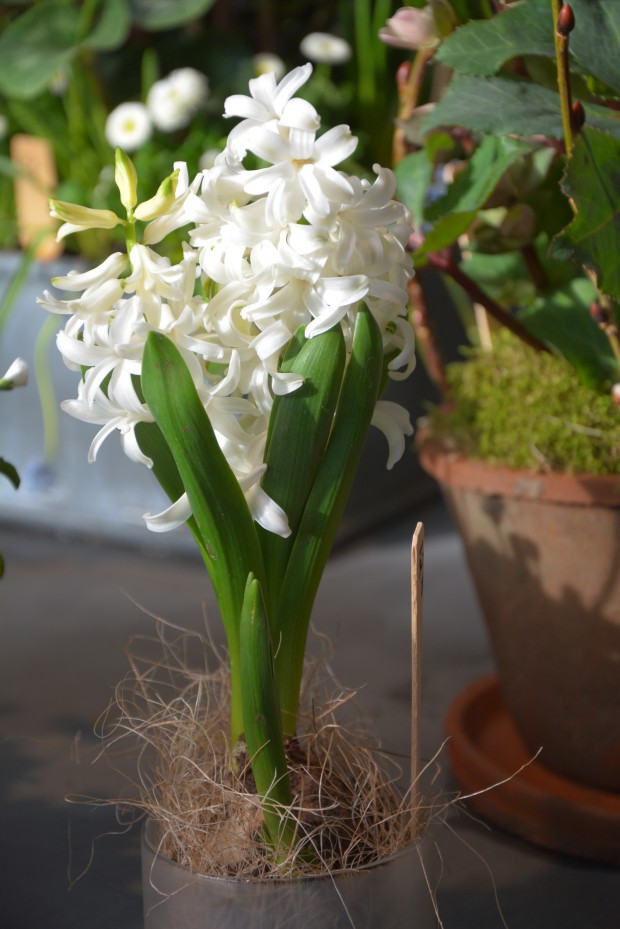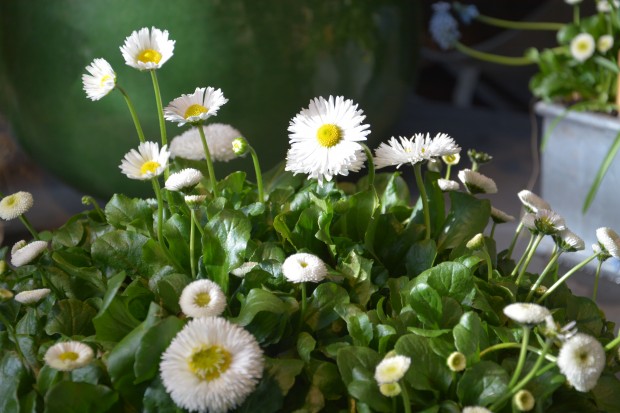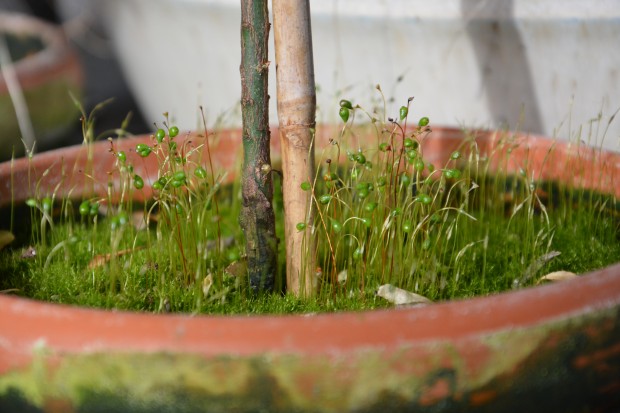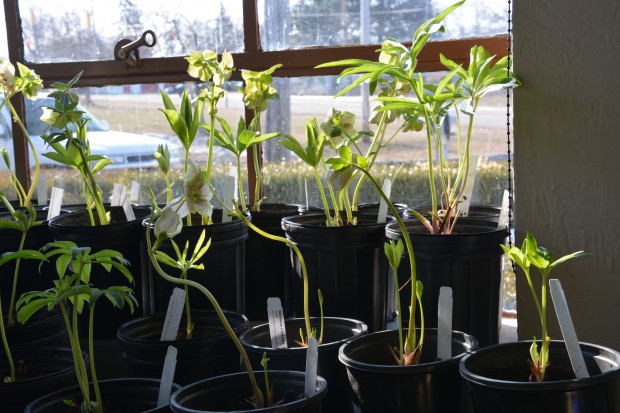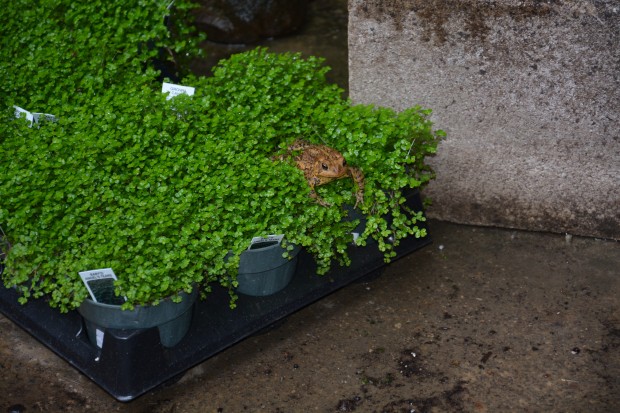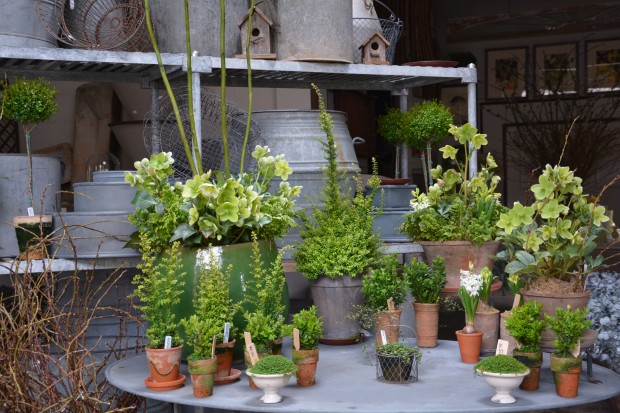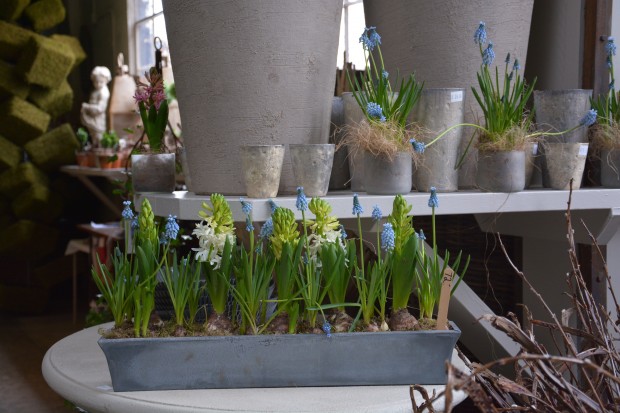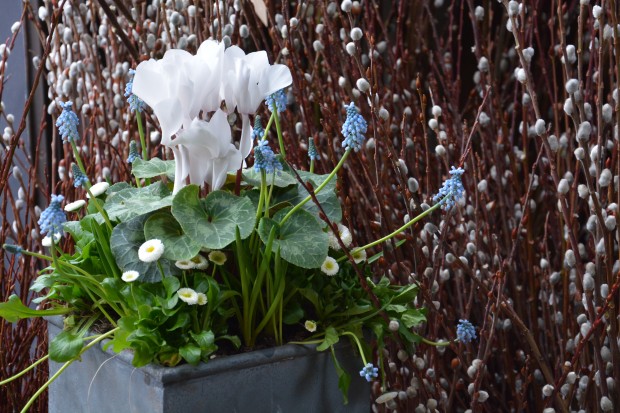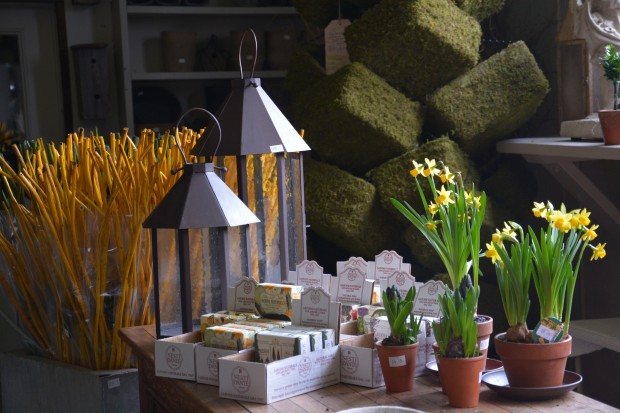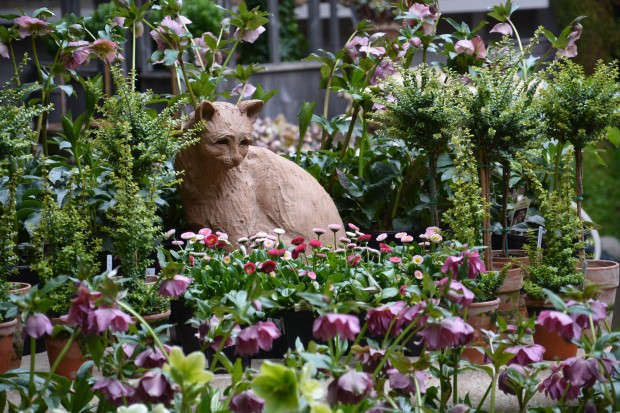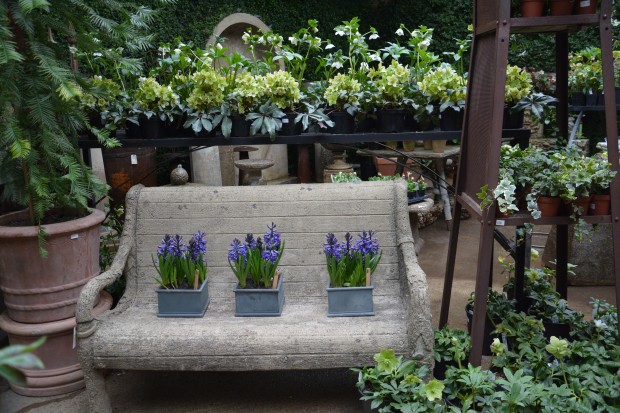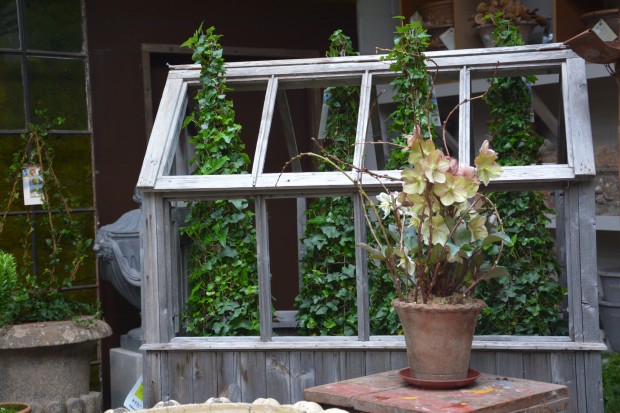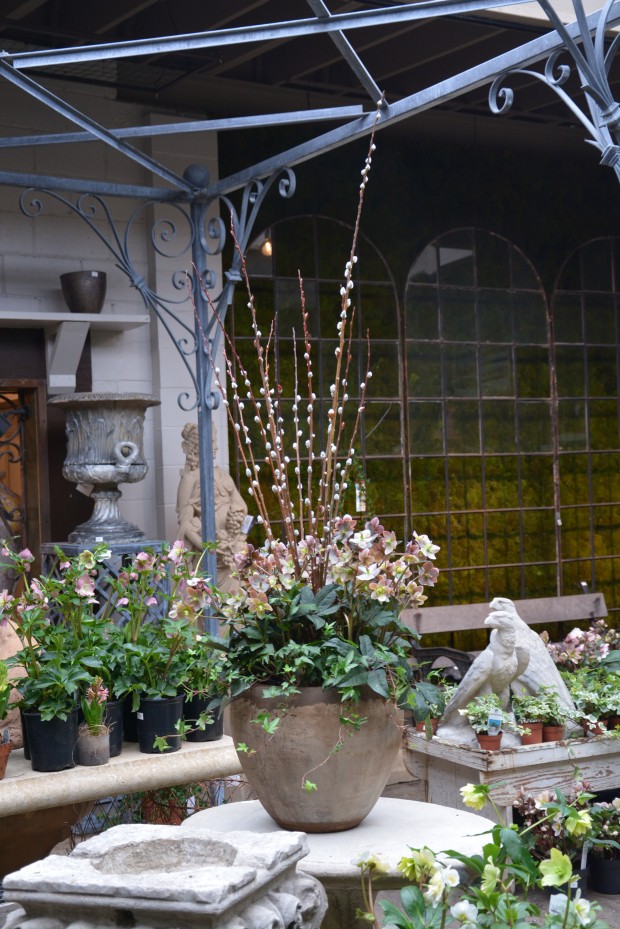 Planting containers for early spring has its pleasures and its pitfalls. The overriding concern is always the cold. We planted containers for a client in downtown Detroit Thursday and Friday of last week-a dicey move, considering the overnight temperatures were very cold. One night-22 degrees. How to best avoid cold damage in early spring is to be sure you are using plants that have had the opportunity to become accustomed to, or the inclination to tolerate the cold.
Planting containers for early spring has its pleasures and its pitfalls. The overriding concern is always the cold. We planted containers for a client in downtown Detroit Thursday and Friday of last week-a dicey move, considering the overnight temperatures were very cold. One night-22 degrees. How to best avoid cold damage in early spring is to be sure you are using plants that have had the opportunity to become accustomed to, or the inclination to tolerate the cold.
 Very few plants thrive in cold weather. That does not mean that they will not adapt and tolerate it. This project was planted solely with plants that had been sown and grown to a good size last fall, prior to being wintered in a cold but not freezing house. The pansies had had months to become accustomed to cooler conditions. Placing them outdoors in cold April weather did not send them into shock.
Very few plants thrive in cold weather. That does not mean that they will not adapt and tolerate it. This project was planted solely with plants that had been sown and grown to a good size last fall, prior to being wintered in a cold but not freezing house. The pansies had had months to become accustomed to cooler conditions. Placing them outdoors in cold April weather did not send them into shock.
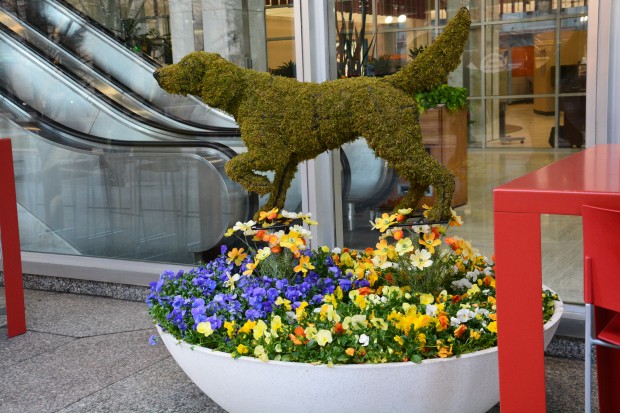 Gardeners who start their own vegetables from seed indoors know that those seedlings need to be hardened off before placement in the garden. Hardening off is a process of exposing seedlings to the reality of seasonal weather, a little bit at a time. A few hours a day in a shady place, then the day outdoors in the sun. Then a planting in the garden. Early vegetables that are sown directly in the garden do not experience transplant shock. Pea seeds can be sown when the soil is workable, and the soil temperature is 45. However, peas that that has been germinated or grown in a warm greenhouse will react poorly to a drastic change in environment. Easy does it.
Gardeners who start their own vegetables from seed indoors know that those seedlings need to be hardened off before placement in the garden. Hardening off is a process of exposing seedlings to the reality of seasonal weather, a little bit at a time. A few hours a day in a shady place, then the day outdoors in the sun. Then a planting in the garden. Early vegetables that are sown directly in the garden do not experience transplant shock. Pea seeds can be sown when the soil is workable, and the soil temperature is 45. However, peas that that has been germinated or grown in a warm greenhouse will react poorly to a drastic change in environment. Easy does it.
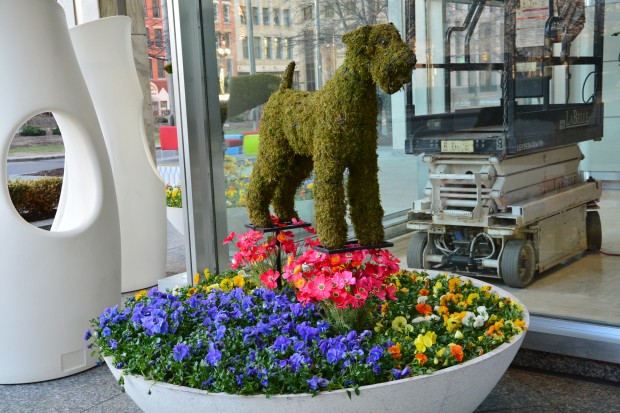 The same would be true for spring flowering perennials. Some growers winter their plants in tunnel houses with no heat, so they are subject to the same cold conditions as perennials already planted in the garden. Other growers pot up bare root perennials in early spring, and bring them on in a warm greenhouse. A hothouse grown perennial may react poorly to being put outside without a hardening off period. Forced pots of hyacinths need some limited exposure to the elements before they are placed in a spring container.
The same would be true for spring flowering perennials. Some growers winter their plants in tunnel houses with no heat, so they are subject to the same cold conditions as perennials already planted in the garden. Other growers pot up bare root perennials in early spring, and bring them on in a warm greenhouse. A hothouse grown perennial may react poorly to being put outside without a hardening off period. Forced pots of hyacinths need some limited exposure to the elements before they are placed in a spring container.
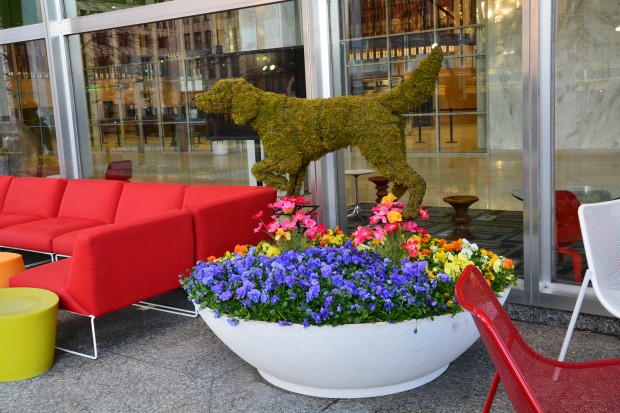 Lime leaved heucheras do not have much tolerance for cold. The leaves will bleach, and go limp. However the heuchera Creme Brulee seems to shrug off the cold. I have had angelina survive the winter in a small pot I had forgotten to get in the ground. But moved outdoors from a warm greenhouse to a cold garden will cause the needles to color up orange and red. This not so spring like look results from the plant’s inability to absorb potassium from the soil, due to cold. If your zonal geraniums have red tinged leaves, they are out in the garden too early.
Lime leaved heucheras do not have much tolerance for cold. The leaves will bleach, and go limp. However the heuchera Creme Brulee seems to shrug off the cold. I have had angelina survive the winter in a small pot I had forgotten to get in the ground. But moved outdoors from a warm greenhouse to a cold garden will cause the needles to color up orange and red. This not so spring like look results from the plant’s inability to absorb potassium from the soil, due to cold. If your zonal geraniums have red tinged leaves, they are out in the garden too early.
 There are plenty of plants that can handle the transitional season known as spring. And having good success with them becomes easier if the plants have been properly hardened off. The hellebores we had in our greenhouse in March were kept at just below 50 degrees overnight. Once the season moderated, we moved them outdoors on carts for the warmest part of the day. When we moved them outdoors for good, we placed them underneath our benches, in the shade. Even a sunny greenhouse is not near the light intensity of a full sun location outdoors. Plants exposed to the sun too abruptly can be scorched by sun and wind.
There are plenty of plants that can handle the transitional season known as spring. And having good success with them becomes easier if the plants have been properly hardened off. The hellebores we had in our greenhouse in March were kept at just below 50 degrees overnight. Once the season moderated, we moved them outdoors on carts for the warmest part of the day. When we moved them outdoors for good, we placed them underneath our benches, in the shade. Even a sunny greenhouse is not near the light intensity of a full sun location outdoors. Plants exposed to the sun too abruptly can be scorched by sun and wind.
 Any plant that is already outside at a nursery is good to go for a spring container. Small spring flowering shrubs are great in containers, and provide some scale. Twigs and dry or preserved materials can add some heft and presence. Perennials that look good in spring containers include hens and chicks, lady’s mantle, brunnera, columbines, coral bells, angelina, lavender and hellebores. Spring vegetables and herbs such as peas, lettuce, cabbages and kales, bok choy and chard, rosemary and parsley, look great in pots. Pansies, violas, ivy, sweet peas, alyssum, and fuchsia can provide so much color and fragrance. If in doubt, harden off.
Any plant that is already outside at a nursery is good to go for a spring container. Small spring flowering shrubs are great in containers, and provide some scale. Twigs and dry or preserved materials can add some heft and presence. Perennials that look good in spring containers include hens and chicks, lady’s mantle, brunnera, columbines, coral bells, angelina, lavender and hellebores. Spring vegetables and herbs such as peas, lettuce, cabbages and kales, bok choy and chard, rosemary and parsley, look great in pots. Pansies, violas, ivy, sweet peas, alyssum, and fuchsia can provide so much color and fragrance. If in doubt, harden off.
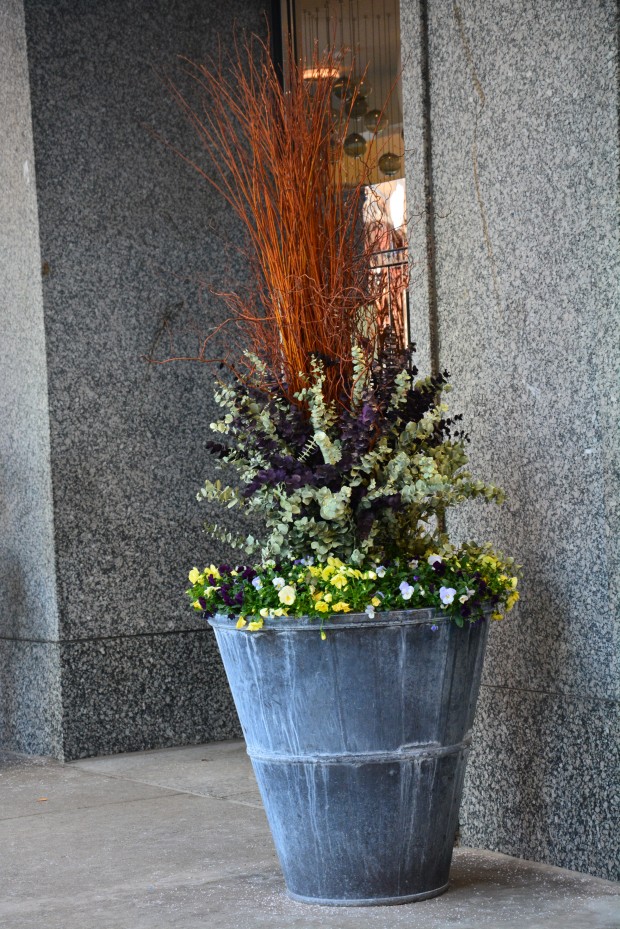 My summer pots usually go on long into the fall. They have the opportunity to get accustomed to the coming of the cold over a long period of time. Petunias, verbenas, million bells, creeping jenny will look great until frost, having been planted in late May. If you want to plant them in the spring, give them some time to adjust to the outdoors before planting. Some gardeners cover their spring plantings for a week or so with floating row cover.
My summer pots usually go on long into the fall. They have the opportunity to get accustomed to the coming of the cold over a long period of time. Petunias, verbenas, million bells, creeping jenny will look great until frost, having been planted in late May. If you want to plant them in the spring, give them some time to adjust to the outdoors before planting. Some gardeners cover their spring plantings for a week or so with floating row cover.
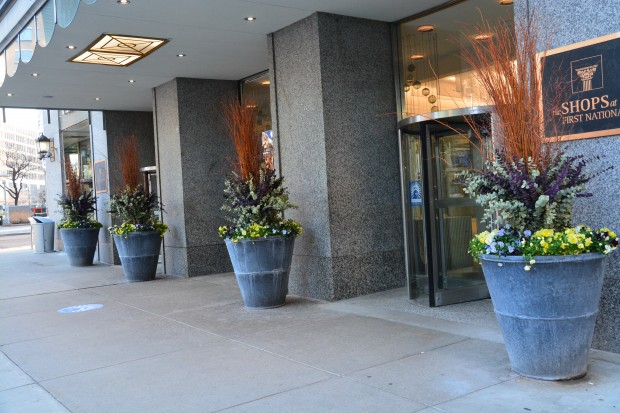 A quick introduction to weather that is too cold can set some plants back such that their growth is stunted. Some never recover. Much better to celebrate each season, in season.
A quick introduction to weather that is too cold can set some plants back such that their growth is stunted. Some never recover. Much better to celebrate each season, in season.
